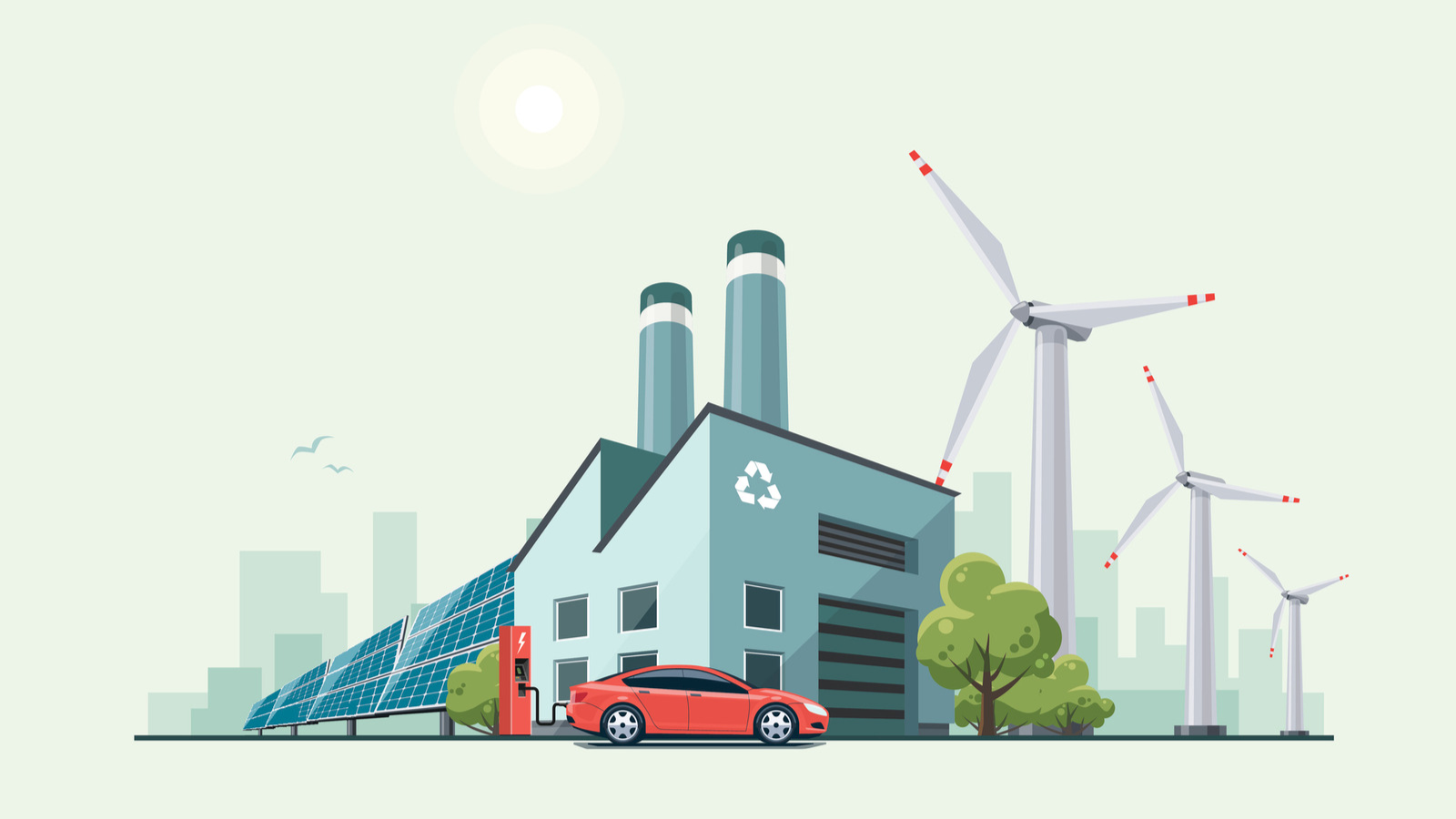[ad_1]
In our mid-monthly February news roundup, we wrote about the Biden Administration’s decision to invest $7.5 billion in electric vehicle (EV) charging and develop an EV charging network across the U.S. It’s just one of many legislative actions the Administration has taken to try and move more EV manufacturing state-side. Today, we’re taking a deep dive into the state of the U.S. auto industry, why the Biden Administration is so invested in EV manufacturing, and how these new rules stand to impact the auto industry at large.
The U.S. Auto Industry: A Brief History
To understand why the Biden Administration is so invested in introducing new manufacturing rules and incentives for automakers, we first need to look at the history of the U.S. auto industry.
The American “Big Three” (Ford, General Motors, and Chrysler) were far and away the largest automakers in the industry’s nascent years. In 1960, the Big Three claimed 85.4% of the industry’s total market share.
However, that dominance didn’t last. By 2010, the Big Three only held 44.4% total market share. Ford, GM, and Chrysler are still huge players in the space, but over the last six decades, other automakers like Honda and Toyota have carved out sections of the industry all their own.
But U.S. automakers haven’t just lost market share. Auto manufacturing, once a staple industry in the U.S., has become increasingly outsourced over the last several decades. In the 1970s, the U.S. produced almost 10 million cars per month. In stark contrast, the U.S. auto industry only produced 1.4 million vehicles in June 2021 — despite automakers, including the Big Three, securing record profits.

Over the last decade, U.S. automakers have continued to innovate and re-establish themselves as giants in the auto industry. But despite bringing auto industry profits back to the U.S., one thing has yet to make a comeback — state-side auto manufacturing. At least, not yet. Enter, the EV.
Inside the Biden Administration’s EV Charging Network
The Biden Administration announced on Wednesday, February 15th, 2023, that the President’s Bipartisan Infrastructure Law would invest “$7.5 billion in EV charging, $10 billion in clean transportation, and over $7 billion in EV battery components, critical minerals, and materials.”
The White House stated that a primary objective for the Department of Transportation (DoT) and Department of Energy (DoE) was supplying Americans across the U.S. with standardized, efficient charging stations for EVs.
However, there’s a catch: For a manufacturer to become part of the EV charging network and receive some of that $7.5 billion in funding, their chargers must use a standardized “Combined Charging System” (CCS), work 97% of the time, and use a single method of identification. Most importantly, 55% of the production costs must come from U.S.-made components by 2024.

This EV charging network — and the government funding that accompanies it — could have a tremendous impact on the U.S. auto market, especially in conjunction with other EV-focused legislation passed by the Biden Administration. The EV charging network:
- Allows manufacturers to gain government funding for products — but only if they invest in state-side manufacturing;
- Forces automakers to standardize their EV chargers if they want to accrue funding (something Tesla has already committed to), which is broadly a positive for EV owners;
- Creates state-side jobs making EV chargers; and
- Enables states to more easily employ their own EV and EV charger manufacturing initiatives.
It’s clear that the Biden Administration sees EVs as a way to kickstart auto manufacturing in the U.S., rebuilding a once-dwindling industry. Other legislation passed by the Administration only further reiterates that goal.
The CHIPS Act
Similar to the Bipartisan Infrastructure Law, the CHIPS Act passed in August, 2022, pours funding into the pockets of manufacturers who support the U.S. automotive industry. The CHIPS Act supplies over $50 billion to American semiconductor chip research, development, workforce expansion, and manufacturing.
Semiconductor chips are used for a wide range of products, with the auto industry a primary consumer. More funding for semiconductor research and manufacturing means more jobs in the U.S. auto industry, and also makes the U.S. more resilient to chip-related supply chain issues that could arise in the future.

The Inflation Reduction Act
The White House cited the Bipartisan Infrastructure Law complementary to the Inflation Reduction Act, and it’s not hard to see why. Among a slew of other rules and regulations, the Inflation Reduction Act — passed in August 2022 — announced a $7,500 tax credit for EV and hybrid buyers, but only for vehicles primarily made in the U.S.
Although the Inflation Reduction Act primarily helps consumers afford EVs, which typically cost more than gas-powered vehicles, it also stands to drive auto manufacturing in the U.S. Automakers who want to capitalize on consumers who make purchasing decisions based on that sizable $7,500 EV tax credit will need to move more manufacturing state-side.
Does your EV qualify for an EV Tax Credit? Find out here.
Will EVs Bring Auto Manufacturing Back to the U.S.?
The long answer is: It remains to be seen. EVs are typically more complicated — and expensive — to produce than gas-powered vehicles and/or hybrids. As a result, many automakers have moved manufacturing or component sourcing to other countries such as Mexico, China, and India to try and offset costs and increase their profit margins. Some automakers have also committed to chasing the Chinese auto market for sales — in June 2022, Grace Taeo, Tesla’s vice-president, told reporters that the company’s Shanghai plant accounted for over 50% of the brand’s global deliveries.
Initiatives such as the Bipartisan Infrastructure Law’s EV charging network, CHIPS Act, and Inflation Reduction Act EV tax credit all stand to give automakers another option, encouraging more state-side manufacturing and consumption. Continued legislation that supports EV manufacturing and sales could put the U.S. auto manufacturing industry on a fast track back to dominance over the next several decades.
[ad_2]
Source link

